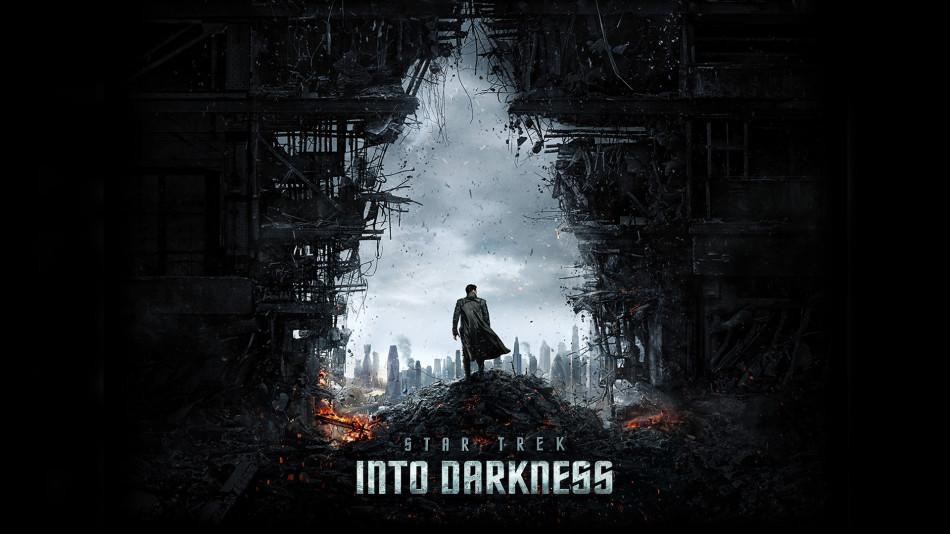Movie Cures: How to Fix “Star Trek into Darkness”
After a critically acclaimed 2009 reboot that used time travel to create an alternate Star Trek universe, the widely beloved franchise returned last summer in “Star Trek Into Darkness.”
I loved “Into Darkness,” and it was definitely in my top three favorite movies of 2013. However, it’s certainly not flawless.
When deciding on how to “fix” the movie, I tried to keep as close to the original plot as possible.
The film follows the Enterprise’s crew as they pursue Khan, a genetically engineered superhuman who has massacred Starfleet officers. However, the real villain is Admiral Marcus, a warmongering Starfleet officer who has been manipulating both the crew of the Enterprise and Khan to facilitate war with the Klingons, an alien race. In the end, Khan kills Admiral Marcus for imprisoning his family, and Kirk, the Captain of the Enterprise, sacrifices himself to save his crew. However, Kirk is brought back to life with Khan’s blood, which has restorative properties.
The first thing to fix is the existence of deux ex machina devices: Khan’s super-blood and Old Spock. The thing about using these plot devices is they only work if they have limited times of usage. In the first movie, using time travel worked because it was very limited, but at the end of Into Darkness, Khan and his crew’s blood can still be accessed at any time. Death has been essentially cured. For this plot-hole to be resolved, both Khan and his crew have to die.
The problem with young Spock asking Old Spock for advice on how to deal with Khan is that using him for information opens a door for the next movies. If the writers ever want to reuse another villain from the original series, the crew could just ask Old Spock how to deal with the problem, and the conflict is resolved. The easiest way to solve this problem is to take Old Spock out of the movie; his offering Spock advice adds little.
Another issue that has to be addressed is Marcus, the corrupt Starfleet officer’s motivation. In “Into Darkness,” his only reason for his actions is his desire for war. This is a weak motivation, not to mention cliché. If his wife had been killed by Klingons, it would make more sense for him to hate them and want a war. It’s not a new idea in the Star Trek universe, but at least his actions make more sense.
Lastly, Carol Marcus needs more character development. Right now, she exists largely to provide a bikini-shot for the trailer and emphasize Kirk’s personality. The least we can do is give her a few one-liners when Kirk tries to hit on her.
Now it’s time to move on the the meat of my revisions: the ending. In my changes I need to accomplish the following: Spock needs to complete his character arc, Uhura needs more development, and Khan and his crew need to die.
In the first movie, Spock’s character arc was learning to be more human. Although that’s a recurring theme throughout “Into Darkness” as well, his main area of character growth, as established in the opening battle-scene, is learning to break the rules. This also emphasizes the theme of morality versus logic. In the current version of the movie, the conclusion of this arc is his decision to fire the torpedoes on Khan, breaking Starfleet regulation.
Breaking the rules may be a step for Spock, but if he had kept all of Khan’s 72 crew members in the torpedoes, killing them as well as breaking the rules, it would have given his development some more weight. This way, he has to sacrifice his ideals as well as his by-the-book tendencies. Killing off Khan’s crew members also eliminates the plot-hole that is the crew’s death-curing super-blood.
Speaking of character arcs that need fleshing out, Uhura should have something to do that doesn’t involve pressuring her boyfriend to share his feelings. Technically, she’s the tertiary character in “Into Darkness.” The perfect way to give her character development some meat is to have her kill Khan.
In “Into Darkness,” Spock goes after Khan in a rage after Kirk dies, and Uhura beams down to stop him from killing Khan, so they can use his super-blood to kill Kirk. We’ve already established that Khan needs to die so that his blood doesn’t become a plot-hole, so why not have Spock be utterly outclassed by Khan when they begin to fight.
One of the major themes of “Into Darkness” is revenge and how it affects us. The audience already knows that a thirst for revenge can give great strength. Having Spock’s lust for revenge impair his fighting ability better demonstrates the flip side of revenge: its ability to impair our functioning. With Spock about to die, Uhura has the opportunity to make the hard decision and kill Khan, nullifying critiques of “Into Darkness” as sexist. It also presents the theme of love triumphing over revenge, positive emotion over negative.
Even though Khan is now dead, I’m sure they would be able to extract enough blood from his dying body to revive Kirk.
At the end of my alternate version of “Into Darkness,” several plot-holes have been sewn up, characters have a bit more depth, and 73 more people are dead. It’s a different direction for the movie (dare I say “darker”?), and while this is in now way a perfect fix, I think it brings the quality of “Into Darkness” closer to the original “Star Trek.”
Then again, it’s all a matter of opinion.

Meilan Steimle (12) is co-Editor-in-Chief of the Winged Post. She was a reporter her freshman year, Winged Post Opinion Editor her sophomore year and Winged...


















![“[Building nerf blasters] became this outlet of creativity for me that hasn't been matched by anything else. The process [of] making a build complete to your desire is such a painstakingly difficult process, but I've had to learn from [the skills needed from] soldering to proper painting. There's so many different options for everything, if you think about it, it exists. The best part is [that] if it doesn't exist, you can build it yourself," Ishaan Parate said.](https://harkeraquila.com/wp-content/uploads/2022/08/DSC_8149-900x604.jpg)




![“When I came into high school, I was ready to be a follower. But DECA was a game changer for me. It helped me overcome my fear of public speaking, and it's played such a major role in who I've become today. To be able to successfully lead a chapter of 150 students, an officer team and be one of the upperclassmen I once really admired is something I'm [really] proud of,” Anvitha Tummala ('21) said.](https://harkeraquila.com/wp-content/uploads/2021/07/Screen-Shot-2021-07-25-at-9.50.05-AM-900x594.png)







![“I think getting up in the morning and having a sense of purpose [is exciting]. I think without a certain amount of drive, life is kind of obsolete and mundane, and I think having that every single day is what makes each day unique and kind of makes life exciting,” Neymika Jain (12) said.](https://harkeraquila.com/wp-content/uploads/2017/06/Screen-Shot-2017-06-03-at-4.54.16-PM.png)








![“My slogan is ‘slow feet, don’t eat, and I’m hungry.’ You need to run fast to get where you are–you aren't going to get those championships if you aren't fast,” Angel Cervantes (12) said. “I want to do well in school on my tests and in track and win championships for my team. I live by that, [and] I can do that anywhere: in the classroom or on the field.”](https://harkeraquila.com/wp-content/uploads/2018/06/DSC5146-900x601.jpg)
![“[Volleyball has] taught me how to fall correctly, and another thing it taught is that you don’t have to be the best at something to be good at it. If you just hit the ball in a smart way, then it still scores points and you’re good at it. You could be a background player and still make a much bigger impact on the team than you would think,” Anya Gert (’20) said.](https://harkeraquila.com/wp-content/uploads/2020/06/AnnaGert_JinTuan_HoHPhotoEdited-600x900.jpeg)

![“I'm not nearly there yet, but [my confidence has] definitely been getting better since I was pretty shy and timid coming into Harker my freshman year. I know that there's a lot of people that are really confident in what they do, and I really admire them. Everyone's so driven and that has really pushed me to kind of try to find my own place in high school and be more confident,” Alyssa Huang (’20) said.](https://harkeraquila.com/wp-content/uploads/2020/06/AlyssaHuang_EmilyChen_HoHPhoto-900x749.jpeg)



